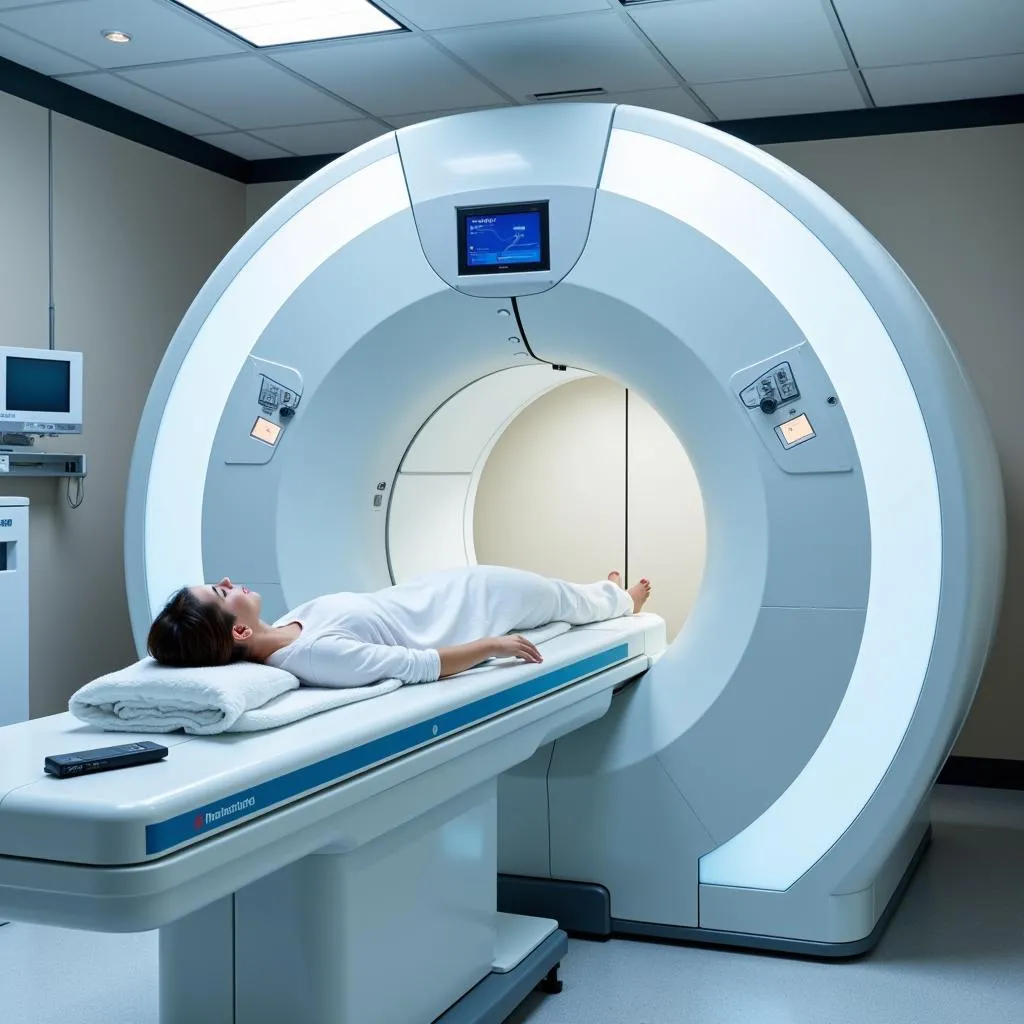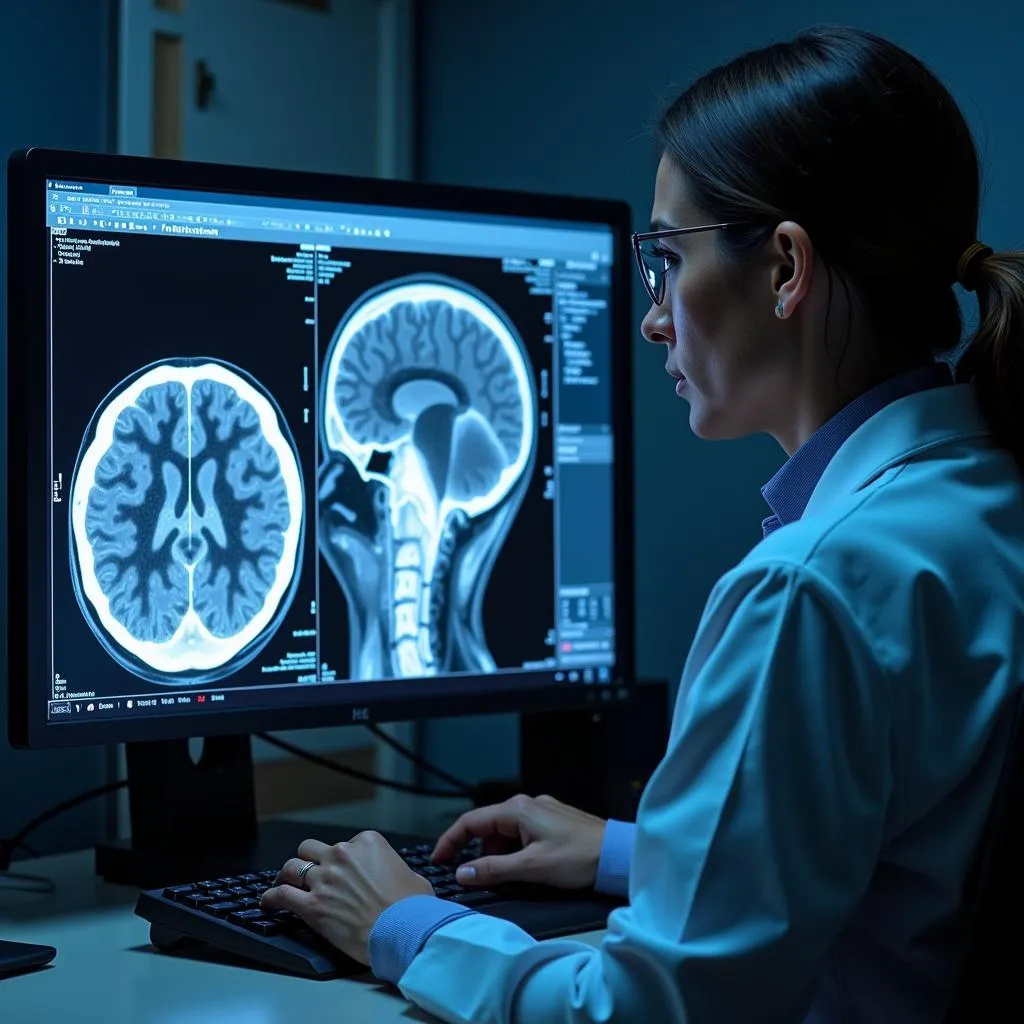The terms “PET scan” and “MRI scan” are often used in medical settings, particularly when discussing diagnostic imaging. While both offer valuable insights into the human body, they utilize different technologies and serve distinct purposes. This article delves into the differences between PET and MRI scans, outlining their strengths, limitations, and ideal use cases.
What is a PET Scan?
A Positron Emission Tomography (PET) scan is a type of nuclear medicine imaging that reveals the metabolic activity of cells and tissues within the body. Unlike other imaging techniques that primarily focus on anatomical structure, PET scans provide a functional perspective, illustrating how organs and tissues are functioning at a cellular level.
How does a PET Scan Work?
Before a PET scan, a small amount of a radioactive substance called a tracer is introduced into the body, usually through an intravenous injection. This tracer is designed to accumulate in specific tissues or organs of interest. As the tracer decays, it emits positrons, which interact with electrons in the body. This interaction produces gamma rays, which are detected by the PET scanner. The scanner then creates three-dimensional images highlighting areas with high tracer concentration, indicating increased metabolic activity.
What are PET Scans Used For?
PET scans are particularly useful in diagnosing a wide range of conditions, including:
- Cancer Detection and Staging: PET scans can identify cancerous tumors and determine their stage, grade, and spread.
- Heart Disease: PET scans can assess blood flow to the heart muscle, aiding in the diagnosis and management of coronary artery disease.
- Brain Disorders: PET scans can evaluate brain activity and detect abnormalities associated with conditions like Alzheimer’s disease, Parkinson’s disease, and epilepsy.
 PET Scan in Progress
PET Scan in Progress
What is an MRI Scan?
Magnetic Resonance Imaging (MRI) is a non-invasive imaging technique that utilizes powerful magnets and radio waves to generate highly detailed images of the body’s internal structures. Unlike PET scans, which focus on function, MRI scans provide exceptional anatomical detail, allowing healthcare professionals to visualize organs, tissues, bones, and even blood vessels with remarkable clarity.
How does an MRI Scan Work?
MRI scanners are essentially large, powerful magnets. When a patient lies inside an MRI machine, the magnets align the water molecules within their body. Radio waves are then emitted, temporarily disrupting this alignment. As the water molecules realign, they emit signals that are detected by the scanner. These signals are then processed by a computer to create cross-sectional images of the targeted area.
What are MRI Scans Used For?
MRI scans are widely employed in various medical specialties, including:
- Orthopedics: MRI scans are highly effective in diagnosing injuries affecting bones, joints, ligaments, tendons, and cartilage.
- Neurology: MRI scans provide detailed images of the brain, spinal cord, and nerves, aiding in the diagnosis of stroke, tumors, multiple sclerosis, and other neurological disorders.
- Oncology: MRI scans can help detect and monitor tumors in various parts of the body, complementing the functional information provided by PET scans.
 MRI Scan Machine
MRI Scan Machine
PET Scan vs. MRI Scan: Key Differences
While both PET and MRI scans contribute significantly to medical diagnostics, they differ in fundamental ways:
| Feature | PET Scan | MRI Scan |
|---|---|---|
| Imaging Principle | Detects metabolic activity using radioactive tracers | Uses magnetic fields and radio waves to visualize anatomical structures |
| Image Type | Functional | Anatomical |
| Radiation Exposure | Involves exposure to a small amount of radiation | No radiation exposure |
| Cost | Generally more expensive | Generally less expensive |
| Duration | Scan time is usually shorter | Scan time can be longer |
When is a PET Scan Preferred over an MRI Scan?
PET scans are often preferred in situations where understanding metabolic activity is crucial, such as:
- Cancer staging and monitoring
- Evaluating treatment response
- Detecting early signs of Alzheimer’s disease
- Assessing blood flow in heart disease
 Doctor Analyzing PET Scan
Doctor Analyzing PET Scan
When is an MRI Scan Preferred over a PET Scan?
MRI scans excel in providing detailed anatomical information and are preferred for:
- Diagnosing musculoskeletal injuries
- Imaging the brain and spinal cord
- Evaluating internal organs for structural abnormalities
- Monitoring tumor growth and spread
Combining PET and MRI: Hybrid Imaging
In recent years, hybrid PET/MRI scanners have emerged, combining the strengths of both technologies into a single imaging platform. These advanced systems provide comprehensive information about both the anatomy and function of tissues and organs, offering unprecedented insights into various diseases.
Conclusion
Choosing the appropriate imaging modality depends on the specific clinical question and the information sought. PET scans excel in visualizing metabolic activity, while MRI scans provide exceptional anatomical detail. Understanding the strengths and limitations of each technique is crucial for healthcare professionals to make informed decisions regarding patient care. As technology advances, hybrid PET/MRI scanners hold immense promise for enhancing diagnostic accuracy and improving patient outcomes across a wide spectrum of medical conditions.
FAQs about PET and MRI Scans
1. Is a PET scan painful?
No, a PET scan itself is not painful. You will receive an injection of the radioactive tracer, which may cause a slight pinch or discomfort, similar to a regular blood draw.
2. How long does an MRI scan take?
The duration of an MRI scan varies depending on the size and location of the area being imaged, but it typically lasts between 30 to 60 minutes.
3. Are there any risks associated with an MRI scan?
MRI scans are generally safe, as they do not involve ionizing radiation. However, individuals with certain medical implants, such as pacemakers or metal implants, may not be eligible for an MRI scan.
4. Can I eat or drink before a PET scan?
You will likely be asked to fast for several hours before a PET scan to ensure accurate results. Your doctor will provide specific instructions.
5. Will I be claustrophobic inside an MRI machine?
Some individuals may experience claustrophobia during an MRI scan, as the machine’s tunnel can feel enclosed. If you are prone to claustrophobia, your doctor may offer medication to help you relax during the procedure.
6. How accurate are PET and MRI scans?
Both PET and MRI scans are highly accurate imaging techniques. However, the accuracy of the results depends on various factors, including the experience of the technician, the quality of the equipment, and the specific condition being investigated.
7. When will I receive my scan results?
The time to receive your scan results can vary depending on the complexity of the case and the workload of the radiologist. Typically, results are available within a few days to a week.
For more information, you can read our other articles:
Need assistance? Contact us via WhatsApp: +1(641)206-8880, Email: [email protected] or visit our office at 276 Reock St, City of Orange, NJ 07050, United States. Our customer service team is available 24/7.